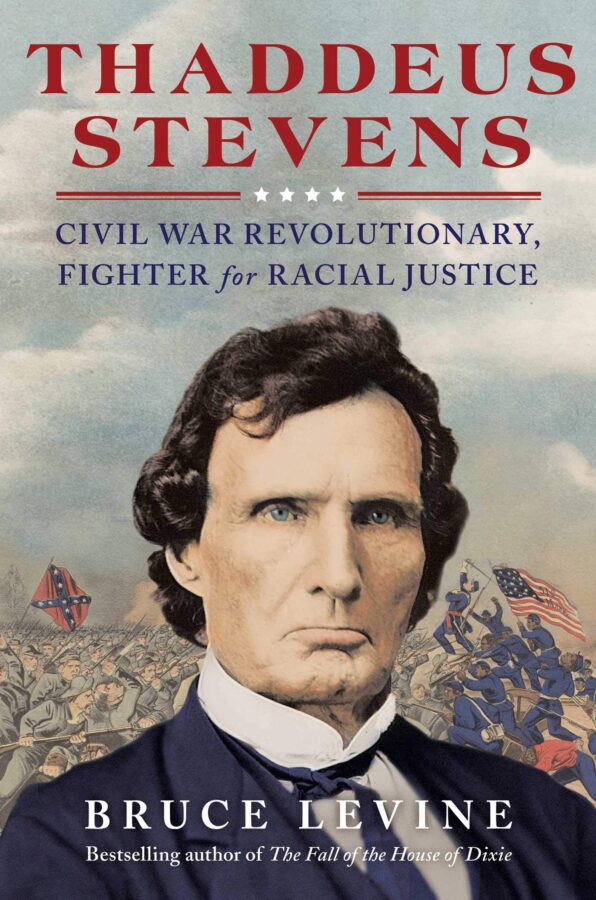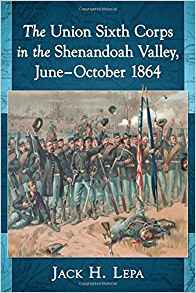Thaddeus Stevens: Civil War Revolutionary, Fighter for Racial Justice by Bruce Levine. Simon & Schuster, 2021. Cloth, ISBN: 978-1-4767-9337-5. $28.00.
 Not long after the raid on Harper’s Ferry, Thaddeus Stevens lent his voice to the growing chorus of Republicans rushing to renounce John Brown. Stevens branded the radical abolitionist a “hopeless fool.” Brown had descended upon the federal armory and arsenal in Virginia with just seventeen men. “He ought to have known,” Stevens remarked, “that it would require at least twenty-five.”
Not long after the raid on Harper’s Ferry, Thaddeus Stevens lent his voice to the growing chorus of Republicans rushing to renounce John Brown. Stevens branded the radical abolitionist a “hopeless fool.” Brown had descended upon the federal armory and arsenal in Virginia with just seventeen men. “He ought to have known,” Stevens remarked, “that it would require at least twenty-five.”
If Stevens’ many admirers and legions of detractors could agree on anything, it was the sting of his sardonic wit. With the possible exception of his fellow radical Benjamin F. Butler, few Civil War Americans provoked such intensity of feeling—or invited such enduring, boldly drawn caricatures. Stevens was almost certainly the inspiration for Austin Stoneman, the brooding and villainous, club-footed Republican congressman depicted in D.W. Griffith’s twelve-reel racist epic, “The Birth of a Nation.” Nearly a century later, in director Steven Spielberg’s “Lincoln,” actor Tommy Lee Jones portrayed the Pennsylvania congressman as slavery’s implacable foe—as stanch as he was eccentric.
Historians and biographers have similarly struggled to paint a truly multi-dimensional portrait of Stevens. Bruce Levine’s Thaddeus Stevens: Civil War Revolutionary, Fighter for Racial Justice is significant, then, not just because it is the first major biography of The Great Commoner in nearly a quarter century, but because it attempts to trace the origins and development of Stevens’ convictions. Levine limns the many sources of Stevens’ radicalism: his early reading of “republican classics and works inspired by the Enlightenment”; his “mother’s evangelical Protestantism”; and the long shadow cast by the struggles of landholders in his native Vermont.
Stevens, the author concludes, was “no plaster saint.” While the Radical Republican “regularly staked out a position well in advance of public opinion,” his ideas—not unlike his prescriptions for achieving a “more egalitarian and democratic form of capitalist society”—evolved over time. His embrace of the Civil War as an abolition crusade, for example, had to overcome his early skepticism about revolutions. “Stevens responded [to the crisis of the Civil War] with great intellectual flexibility,” Levine argues, “repeatedly recalibrating his thinking about major issues, reevaluating old assumptions, and pressing new initiatives in the face of changing circumstances.”
Levine observes that Stevens was a diligent student of the law of nations, and that his reading of Emer de Vattel—together with “the logic of events”—informed many of his more radical positions. Since the Civil War was a contest of national “self-preservation,” Stevens reasoned that the United States “was obliged to do whatever was necessary to triumph.” This included confiscation of persons enslaved by the enemy. After the rebellion, the law of nations underwrote Stevens’ conviction that the rebellious states no longer existed as “self-governing political entities.” As such, they were conquered territories—subject to occupation and martial law.
Stevens was principled, but he could also be a hard-nosed pragmatist. In the 1840s, he resisted the allure of abolition and antislavery third parties, believing that they had little prospect of electoral success. In 1866, when Tennessee sought readmission to the Union with a state constitution that denied Black suffrage, Stevens held his nose and voted for the bill—fearful that opposition might deleteriously effect Republican chances at the polls in that autumn’s crucial midterm elections. Most dramatically, when moderate members of his own party found the initial draft of the Fourteenth Amendment too far-reaching, Stevens settled for a “halfway measure” that allowed Congress to reduce a state’s representation in the body “in proportion to the number of adult male citizens specifically barred from the polls.” On this point, Levine remarks, Stevens supplied “a textbook lesson in how to accept a necessary compromise without abandoning or concealing one’s own political position.”
Levine’s book “focuses on [Stevens’] role as a public figure,” so those hoping to glean insights into the Radical Republican’s private life will be disappointed. The narrative moves along at a spirited clip, sometimes at the expense of human color, contemporary commentary, and scene setting. Levine devotes just five pages, for example, the passage of the Fourteenth Amendment, and the same number of pages to the Johnson impeachment. The book ends rather abruptly, missing an opportunity to trace its subject’s place in historical memory. Shortcomings aside, this is an accessible biography that will ply popular audiences with a valuable new perspective on a soldier of the Second American Revolution.
Brian Matthew Jordan is the author of A Thousand May Fall: Life, Death, and Survival in the Union Army (2021).
